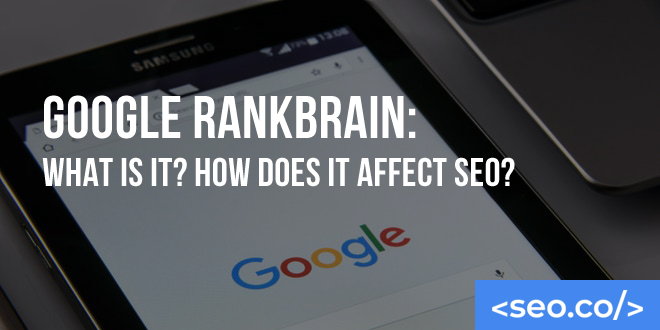Google updates are expected.
In fact they have increased in frequency to an almost constant:
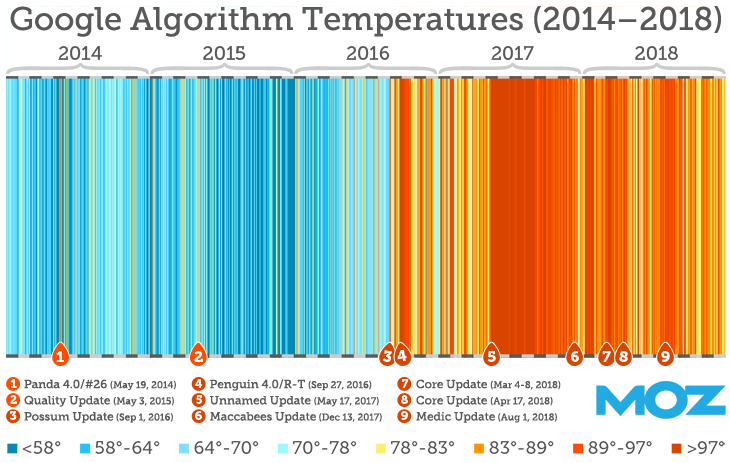
When Google announced that it was introducing a new feature to its search algorithm called RankBrain, not many people outside the SEO community seemed to care.
Even after Google pointed out that the new RankBrain system had been watching, tweaking, and changing search results on its own for more than a month, few people noticed anything different in their search results.
Accordingly, there hasn’t been much in the way of public discussion.
Despite this lack of public awareness, RankBrain is one of the most significant advancements to Google’s algorithm since the Panda update.
If you want to preserve and improve your SEO strategy for the coming years, you’ll need to understand its full potential.
Table of Contents
The High-Level Breakdown of RankBrain
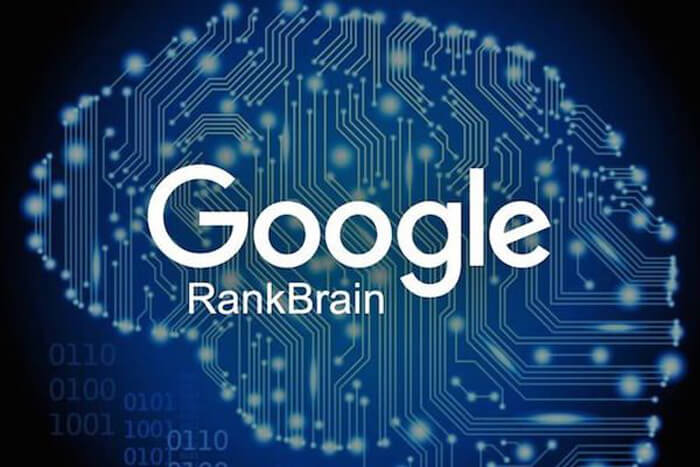
Before I get too deep into the tangible effects of the RankBrain system, let me explain the basics.
RankBrain is a machine learning algorithm that works in conjunction with the Hummingbird Update to give better search results for user queries.
The Hummingbird update included the then-new feature of “semantic search,” so rather than focusing on individual keywords in a user query, Google would be able to look at the entire phrase and user intention behind it.
RankBrain takes this a step further by analyzing ambiguous, unclear, or otherwise indecipherable semantic user queries, learning from the experience, and applying that experience to future, similar queries.
For example, if you search for something like “what is the executive leader of the United States called?” you might get results about the position of “President.”
On the other hand, if you search for something more ambiguous like “who is it that leads America in politics?” Google might struggle.
With RankBrain, Google would be able to learn that the latter search query is actually just a less clear way of rephrasing the former search query, and would gradually shift search results to match.
This is impressive because the majority of Google’s search algorithm updates, including Hummingbird, have been deliberately and painstakingly pre-programmed by human beings.
Using machine learning and artificial intelligence RankBrain is going to learn, posit, and execute updates to itself over time, free of any human intervention.
Misconceptions of RankBrain
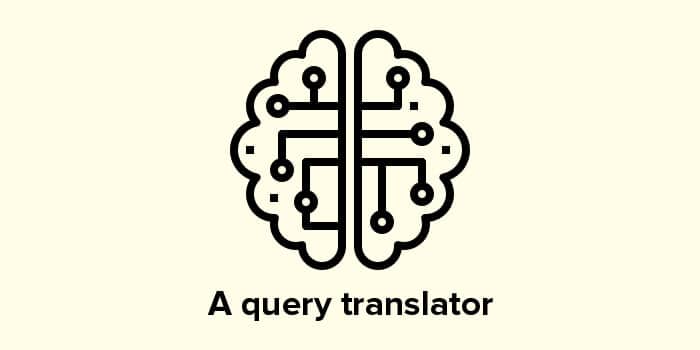
Though RankBrain is only a few weeks old at this point, there are a handful of key misconceptions about what it is and how it fits into our current understanding of search.
First, understand that RankBrain isn’t a formal algorithm update. Unlike Panda, Penguin, or other landmark algorithm changes, RankBrain isn’t shaking up the ranking factors that Google considers when sorting out which sites to list first in the SERPS—instead, RankBrain is something of a ranking signal of its own.
It’s working in conjunction with the Hummingbird update (which is an algorithm update) to produce a better understanding of queries—not a different selection of results. Think of it as a query translator.
Second, know that RankBrain is similar to, but distinct from, the Knowledge Graph. Because RankBrain and the Knowledge Graph are both forms of query service that analyze user queries and improve via machine learning over time, it’s easy to mix them up or assume that they work in the same way. However, RankBrain is focused on understanding queries, while the Knowledge Graph is focused on providing the best direct answers to certain queries. Think of it this way; RankBrain could serve to better understand your query, then pass it off to the Knowledge Graph for a proper and complete answer.
Users will continue using Google the way they always have, without any visual or experiential clues to suggest that anything different is happening behind the scenes. The end result is going to be better results for a greater number of queries, which is important, but shouldn’t provide any disruption to usual processes.
Will Search Change That Much?
The nature of RankBrain means that the average user isn’t going to notice much of a difference.
The changes it makes will be tiny, gradual, and will only exist for long-form user queries.
Still, you might notice yourself getting better results in certain areas—apparently, RankBrain has already affected millions of queries (which isn’t that impressive for a search engine that processes more than 40,000 queries every second).
What Comes AFTER Google RankBrain & What it Means for SEO?
Google’s latest update isn’t making waves because of how many ranking factors it changed, or how many queries it’s impacted, or even how detailed or effective it is.
Though Google didn’t announce the update until the end of October, it had been running in the background for months.
According to Google, it’s already helped to handle millions of queries, but if it’s so effective, why haven’t search marketers noticed it until now, and why is it so significant?
It all has to do with the type of update RankBrain is—a slowly building machine learning algorithm.
In the SEO world, we’re used to large, manual pushes to the core Google ranking algorithm (and very rare algorithm replacements).
Panda was the first example of this in 2011, followed by Penguin in 2012. After these twin heavy-hitters, search marketers buckled down, constantly on the lookout for the next major update to shake up rankings.
Two things have happened since then that have challenged our expectations: the first is that Google has broken up its “big” updates into much smaller, more manageable chunks.
Part of this is to reduce the total impact of each update, and part of this is because they don’t have a lot to add.
The second is the introduction of this machine learning algorithm, which changes the way Google’s algorithm will update in the future.
What Is Machine Learning?
Machine learning is exactly what it sounds like; RankBrain is closely associated with the Hummingbird update Google released back in 2013, which brought a semantic understanding to Google’s analysis of user queries.
RankBrain works by analyzing complex or ambiguous user queries, and finding ways to simplify those queries.
However, it wasn’t pre-programmed for any specific courses of action; instead, it was programmed to experiment, learn, and essentially update itself.
So What Now?
If Google has a component of its algorithm that can update itself automatically, they can consider their job complete.
Theoretically, if they could apply machine learning algorithms to every aspect of its search algorithm, Google’s search engine would be able to gradually update itself over time, always improving, without ever requiring human intervention.
Combined with the knowledge that Google hasn’t pushed a big update to its algorithm since 2013 (ignoring the smaller, more gradual refreshes of Panda and Penguin), there’s a great deal of ambiguity in Google’s next move.
Obviously, they’ll want to continue improving and refining their core algorithm, but how are they going to do it?
The Case for Big Manual Updates
Even though big manual updates have tapered off, there’s still a possibility that there are more to come.
New technologies (on the order of mobile devices) could disrupt the current search format, and advances in semantic understanding or user patterns could force a manual push to become necessary.
Plus, even though machine learning is great in theory, it’s untested and entirely unpredictable, necessitating a form of manual backup to serve as a complement.
If manual pushes remain, search marketers will need to remain vigilant, always watching for the next big change.
Historically, these pushes have come without warning or instruction, and have shaken up what were considered “best practices” in SEO before their release.
The Case for Gradual Manual Updates
Though it’s possible that more big manual pushes wait on the horizon, it’s more likely that Google will stick with the slow, gradual manual updates that it’s been using for the past few years.
These pushes happen manually, so they protect against the total reliance on machine learning for algorithm advancement, but they’re less intensive and more flexible than their larger, more significant counterparts.
This retains some control for Google, and since its algorithm is in excellent shape currently, these gradual pushes spare it some effort.
If gradual pushes remain the mainstay, there’s almost nothing you need to change.
Most current best practices will remain in their current form, demanding that you continue producing good content, building offsite relationships, and so on. The tweaks will come so slowly and imperceptibly that your bottom line will be barely affected.
The Case for More Machine Learning Updates
Gradual manual updates don’t take much time, but they do still take time.
In Google’s ideal world, everything will be fully automated—just look at their efforts into self-driving cars.
The likeliest scenario is that Google will strive for more updates like RankBrain, eventually turning its full algorithm into a giant, self-regulating, self-updating behemoth.
Even if Google decides to opt for an all-machine-learning version of its algorithm, it will be some time before it can handle such a task.
In the meantime, we’re likely to see a gradually shifting hybrid of machine learning and gradual manual updates.
This will give you time to prepare for unknowns, and gradually introduce you to the machine learning algorithm of tomorrow.
Parting Thoughts
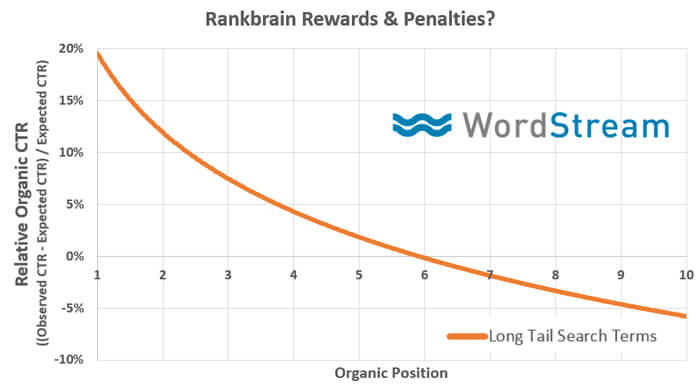
If you’re worried about what RankBrain will mean for SEO, don’t be.
Because RankBrain is more focused on analyzing and mapping out user queries than it is sorting out sites for potential rank, you won’t have to change much about your current strategy.
Best practices are still best practices, and there aren’t any strange new ranking factors to learn and implement.
Still, don’t be surprised if you see some ranking shakeups coming out gradually in the next few months as RankBrain scales upward. Because ambiguous long-tail phrases are the main targets here, if your strategy revolves around long-tail keywords, you might see a small hit in overall ranks (or a small boost, depending on the queries). But it’s nothing to be concerned about, and it doesn’t demand any significant changes to your existing approach.
It’s likely that more machine learning algorithms will arise in Google after RankBrain, eventually shifting the algorithm from a monthly, gradually updating one to one that completely updates by itself.
It’s likely that big manual updates are pretty much done for, and that gradual manual updates will serve as a complement in the interim.
This means that your strategy won’t require much adjusting, especially in the short-term.
Changes will happen so gradually, you’ll barely notice them, and by the time machine learning fully takes over Google, you’ll be well versed in its abilities (as long as you keep yourself in the loop).
Ultimately, RankBrain is an impressive and significant addition to Google’s algorithm (apart from just quality link building), but it isn’t going to revolutionize the world of SEO the way algorithm updates like Panda and Penguin have.
However, this is a major step for Google in the introduction of machine learning to its central processes.
Keep watch for other, similar machine learning segments of its algorithm to be introduced, and stay on your toes to react to those changes.
Tim holds expertise in building and scaling sales operations, helping companies increase revenue efficiency and drive growth from websites and sales teams.
When he's not working, Tim enjoys playing a few rounds of disc golf, running, and spending time with his wife and family on the beach...preferably in Hawaii.
Over the years he's written for publications like Forbes, Entrepreneur, Marketing Land, Search Engine Journal, ReadWrite and other highly respected online publications. Connect with Tim on Linkedin & Twitter.
- How to Rank for Local SEO in Multiple Locations - April 16, 2024
- SEO for Mass Tort Lawyers: Everything You Need to Know - April 3, 2024
- Natural Backlinks vs. Unnatural Backlinks: How to Build a Natural Link Profile - April 1, 2024


